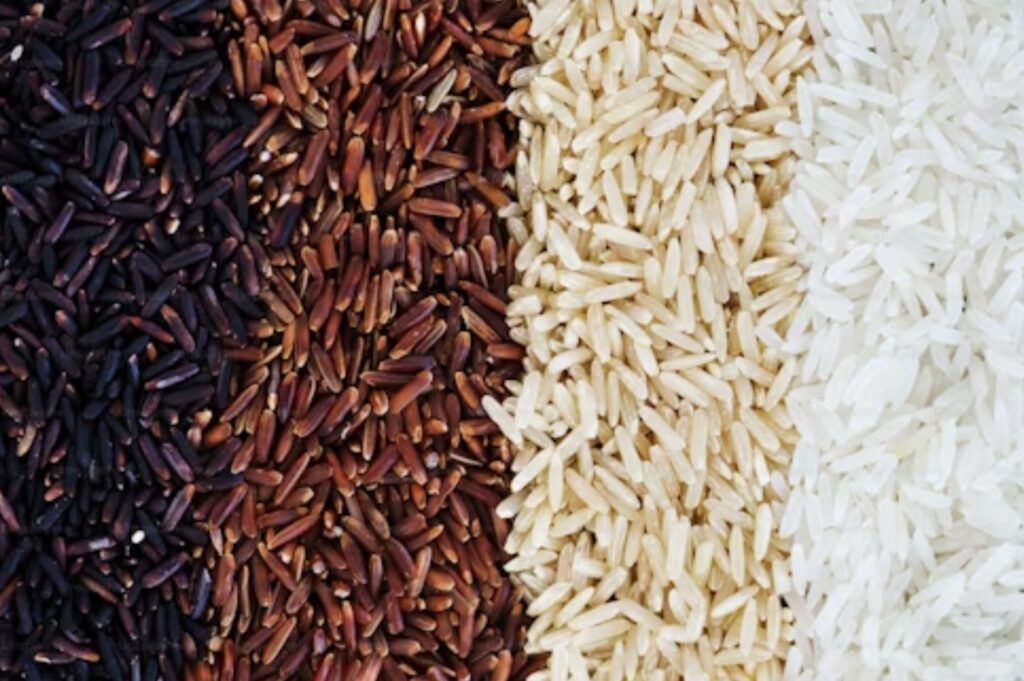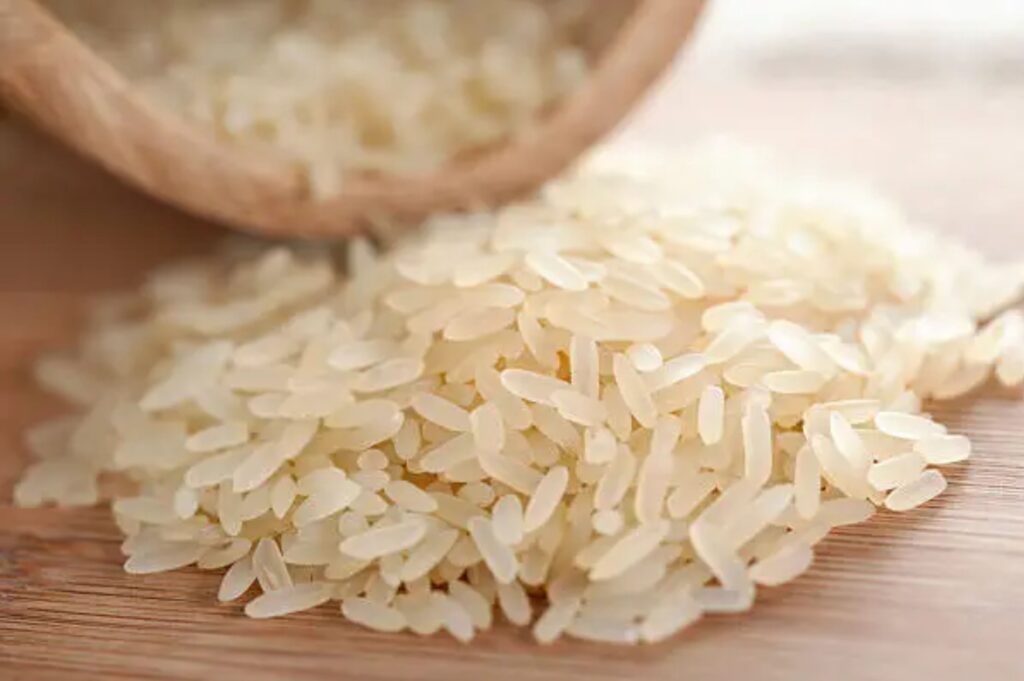
Introduction
Rice is a staple food for millions of people worldwide, especially in Asia and Africa. As one of the most important agricultural commodities, rice significantly impacts both the global and local economies. For African countries, where rice consumption is steadily increasing, fluctuations in rice prices on the financial market can have far-reaching effects. This article examines rice price trends from January 2024 to January 2025, the impacts on goods derived from rice for African consumers, and how African traders can profit from these market dynamics. We will also explore the rice market outlook 2025, including potential challenges and opportunities.
Rice Price Performance from January 2024 to January 2025
As of January 2024, rice prices have experienced notable volatility, primarily driven by supply constraints, climatic conditions, and shifts in global trade policies. Futures prices for rice, particularly white rice (the most traded variety), have been fluctuating between $14.50 and $16 per 100 pounds on major commodity exchanges like the Chicago Mercantile Exchange (CME).
Several factors have influenced these price movements:
- Weather Patterns and Supply Shortages: Adverse weather conditions in key rice-producing countries such as India, Thailand, and Vietnam led to lower-than-expected harvests in late 2023. This disruption in supply pushed prices upward as global demand remained steady.
- Export Restrictions: In 2024, major rice-exporting nations, particularly India (which accounts for over 40% of global rice exports), implemented export restrictions on rice in response to concerns about domestic food security. This further reduced the global supply, pushing prices higher.
- Increased Demand in Emerging Markets: Countries in Africa, the Middle East, and Southeast Asia have increased their demand for rice, adding pressure to already constrained global supply chains.
As a result, rice prices on the financial markets have seen a steady increase from $14.50 per 100 pounds in January 2024 to about $15.60 per 100 pounds by mid-January 2025, reflecting a 7.5% rise in just over a year.
Impact on Prices of Rice-Based Goods for African Consumers
The rise in rice prices has had a direct and noticeable impact on African consumers. As rice is a staple food across many African countries, from Nigeria to Senegal, increases in rice prices affect both the cost of raw rice and the price of processed rice-based products.
1. Increased Cost of Rice:
The price increase in the global market translates to higher prices for both imported and locally produced rice across African countries. For instance, in countries like Nigeria, where rice imports play a significant role in meeting domestic demand, a bag of rice (50 kg) that cost around 25,000 Nigerian Naira in January 2024 is now approaching 27,500 Naira due to higher global prices and importation costs.
2. Price Inflation of Rice-Based Products:
Processed rice products such as rice flour, rice snacks, and rice cakes are also experiencing price hikes. For instance, a packet of rice flour used in local culinary recipes may see its price rise by 5-10%, directly impacting household budgets.
3. Pressure on Consumer Spending:
As rice becomes more expensive, it places additional pressure on household budgets in Africa. The increase in food costs may lead to higher inflation rates in certain African countries, where rice is a core component of the diet. This inflation can exacerbate food insecurity in low-income areas.
How African Traders Can Profit from Rising Rice Prices
The surge in rice prices presents several opportunities for African traders to profit, particularly through strategic sourcing, processing, and trading. Here are some ways in which traders can capitalize on the ongoing market dynamics:

1. Strategic Import and Export Opportunities:
African traders can take advantage of price fluctuations by entering into futures contracts for rice. For instance, traders can lock in contracts at relatively lower prices and profit as rice prices continue to rise. Additionally, importing rice from countries with cheaper production costs and reselling in local markets at a higher price can yield significant profits, particularly in regions where domestic supply is limited.
Furthermore, exporting rice from African countries with surplus production to countries facing shortages can be a lucrative opportunity. For example, traders in countries like Burkina Faso and Mali that have surplus rice can look to export to neighboring nations facing production deficits, particularly in the Sahel region.
2. Processing and Value-Added Products:
By engaging in rice milling and processing, African traders can create value-added rice products such as rice flour, broken rice for animal feed, and parboiled rice. These products generally offer higher profit margins than raw rice. As global rice prices rise, so too does the cost of milling and processing, but by increasing efficiency and focusing on local markets, traders can maintain healthy profit margins.
Additionally, as demand for organic and locally grown rice increases, traders who focus on sustainable and high-quality rice production may benefit from premium pricing, especially for niche markets.
3. Hedging and Investment in Rice Futures:
African traders can also consider trading rice futures contracts on the Chicago Mercantile Exchange (CME) or other commodity exchanges. By carefully monitoring market trends and entering futures contracts at favorable prices, traders can benefit from price increases or hedge against potential losses. Risk management strategies such as hedging through futures markets can help traders minimize losses from price volatility.
4. Supply Chain Investments:
Investing in the rice supply chain, including storage and transportation infrastructure, can provide significant long-term returns. Improved storage facilities help mitigate losses from spoilage and ensure better price control. Efficient transportation networks enable traders to quickly move rice to areas where demand is rising, ensuring higher profits.
Perspective for 2025: Rice Price and Market Outlook
Looking ahead to 2025, the rice market is expected to remain volatile, influenced by a variety of factors:
- Continued Weather Impacts: Climate change and extreme weather events in major rice-producing countries could continue to affect global rice production, keeping supply constrained and prices elevated.
- Geopolitical and Trade Policies: Trade restrictions and protectionist policies in key exporting countries could limit rice availability in international markets, contributing to price instability.
- Increasing Demand in Africa: The demand for rice in African markets is expected to continue growing, driven by population growth, urbanization, and changing dietary preferences. As a result, prices in local markets may continue to rise, particularly in countries where rice production cannot keep pace with consumption.
Industry experts predict that rice futures prices in 2025 may range between $16 and $17 per 100 pounds, depending on supply conditions, trade policies, and global economic factors.
Conclusion
Rice prices on the financial markets have shown significant volatility between January 2024 and January 2025, primarily driven by supply shortages, climatic conditions, and shifts in global trade. The effects of rising rice prices are being felt across African countries, where rice is a staple food, with increased costs for both consumers and traders. However, African traders who strategically position themselves in rice import-export, processing, and futures trading can benefit from these price fluctuations. Looking ahead to 2025, the rice market is expected to remain dynamic, offering opportunities for traders who are prepared to navigate the challenges and capitalize on the demand growth across Africa. By staying informed and adapting to market conditions, African traders can successfully profit from the evolving rice market landscape.
